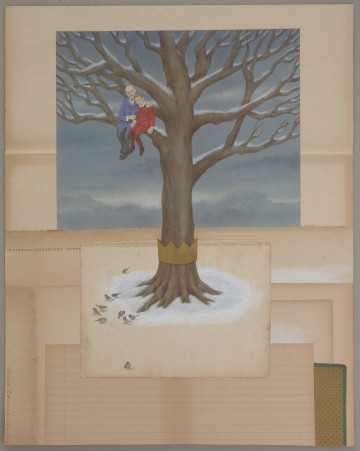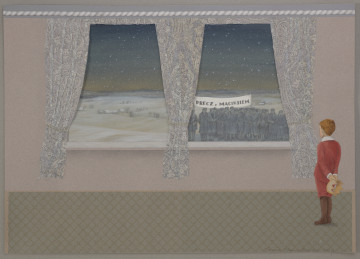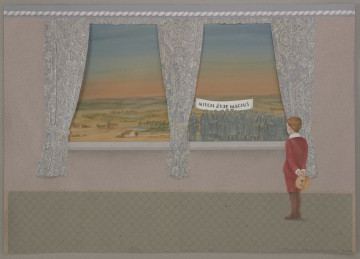
Tree
2017
Museum of the history of Polish Jews
Part of the collection: European classics of modernity
Wacław Szymanowski began his artistic education in Wojciech Gerson's Drawing Class in Warsaw. In 1875, he settled near Paris, where he began studying sculpture. He studied under neoclassicists, in Cyprian Godebski's private studio in Neuilly-sur-Seine (1875-1879) and in Eugène Delaplanche's atelier at the School of Fine Arts (1879-1880). Contact with the painters Józef Chełmoński and Henryk Piątkowski convinced Szymanowski to the medium, to which he devoted twelve years of creative work. Between 1880 and 1883, he studied painting at the Academy of Fine Arts in Munich, first in Gyula Benczúr's class of antiquity and then with Ludwig von Löfftz, a young professor interested in rural themes. In 1895 he moved again to Paris, where he returned definitively to his sculpting activities. The works of August Rodin and Constantin Meunier became the most important model for Szymanowski. Like them, he renounced frontal arrangements, violated the tectonics of solids, and preserved ephemeral shapes, as if caused by the movement of air or the flow of water. In 1905, he settled in Krakow, beginning work on the biggest project of his life the group Pochód na Wawel [Procession to Wawel]. The sculptor intended it to complement the medieval and Renaissance monuments on the castle hill, together with the new buildings. The group of 52 statues set on a 35-metre span was to depict the figures of Polish rulers residing at Wawel. The individual statues of the procession with sketchy, variable outlines, representing different types of human silhouette and personality, remain a testimony to the unrealised concept. In the collection of the National Museum in Szczecin there is a bronze cast according to bozetta of a figure of King Bolesław Śmiały. The bronze model of the arrangement of figures entered the collection of the National Museum in Kraków, while the most complete plaster sketch, taking into account the architectural context, was destroyed by the Nazis in the Wielkopolska Museum in Poznań.
Szymon Piotr Kubiak
Author / creator
Dimensions
cały obiekt: height: 44,5 cm, width: 18 cm
Object type
sculpture
Creation time / dating
Creation / finding place
Identification number
Location / status

2017
Museum of the history of Polish Jews

2017
Museum of the history of Polish Jews

2017
Museum of the history of Polish Jews
DISCOVER this TOPIC
Castle Museum in Łańcut
DISCOVER this PATH
Educational path